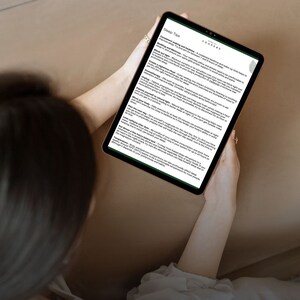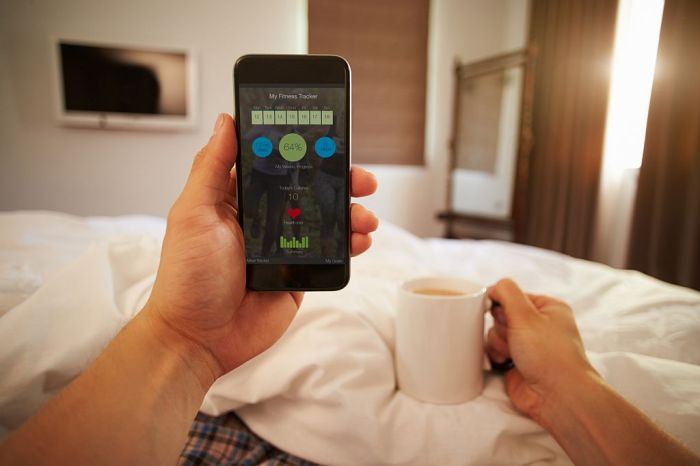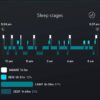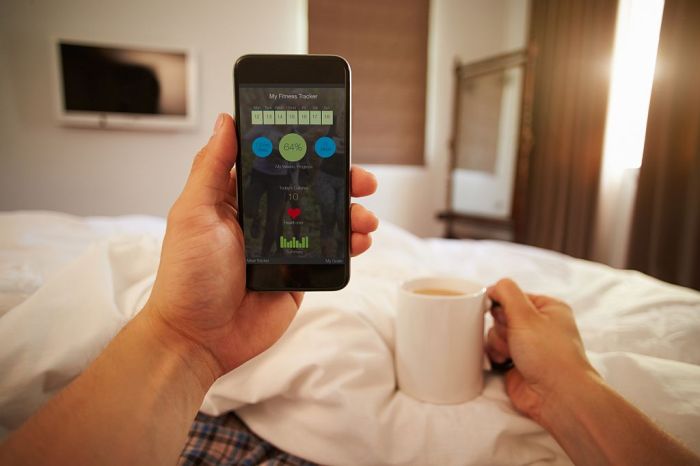How to use a sleep tracker to improve your sleep tonight? This guide dives into the world of sleep trackers, showing you how to use them effectively to optimize your slumber and wake up feeling refreshed. We’ll explore different types of trackers, common pitfalls to avoid, and practical strategies for improving your sleep tonight. Get ready to unlock the secrets to better sleep!
Understanding how sleep trackers work is the first step. From wristbands to smartwatches, they utilize various technologies to monitor your sleep patterns. They measure key metrics like sleep duration, sleep stages (light, deep, REM), and heart rate. Proper setup is crucial for accurate readings. Follow the instructions carefully, and understand that environmental factors, like light and temperature, can impact the data.
This initial understanding will help you to interpret the data more effectively later on.
Understanding Sleep Tracking Basics
Sleep tracking devices have become increasingly popular tools for improving sleep quality. They offer valuable insights into sleep patterns, allowing users to identify potential issues and make adjustments to their routines. Understanding how these devices work and the data they collect is crucial for interpreting the results effectively.Sleep trackers utilize various technologies to monitor sleep. Common methods include sensors that detect movement, changes in heart rate, and skin temperature.
These sensors are embedded in different devices, such as wristbands and smartwatches. By analyzing these data points, the devices can estimate sleep duration, sleep stages, and other metrics.
How Sleep Trackers Work
Sleep trackers function by detecting physical changes associated with sleep. For instance, wristbands or smartwatches use accelerometers to measure movement patterns. Changes in heart rate and skin temperature are also monitored, often using optical sensors. These sensors are typically embedded within the device, allowing for continuous data collection throughout the night. Different devices may utilize different combinations of these sensors, resulting in slightly varying data interpretations.
Types of Sleep Trackers
Sleep trackers come in various forms, each with its own set of features and limitations. Choosing the right device depends on individual needs and preferences.
- Wristbands are a common type, often featuring a comfortable design and relatively simple setup. They typically monitor movement and heart rate, providing basic sleep metrics. They are generally affordable and easy to use, making them suitable for those seeking a straightforward sleep tracking solution.
- Smartwatches integrate sleep tracking with other fitness features. They often provide a more comprehensive analysis of sleep data, including sleep stages and heart rate variability. However, the accuracy of sleep tracking can sometimes be affected by the presence of other apps or functionalities running concurrently.
- Dedicated sleep masks and trackers often focus solely on sleep monitoring, providing a dedicated environment for tracking and analysis. These devices frequently incorporate advanced sensors and algorithms, allowing for a more precise measurement of sleep stages and associated metrics.
Common Metrics Measured, How to use a sleep tracker to improve your sleep tonight
Sleep trackers typically measure various metrics to provide a comprehensive understanding of sleep patterns.
- Sleep Duration: The total time spent asleep. This metric provides a general overview of how much sleep one is getting, which can be crucial for evaluating sleep adequacy.
- Sleep Stages: Tracking different sleep stages, such as light sleep, deep sleep, and REM sleep, offers insights into the quality of sleep. Understanding the distribution of these stages can help identify potential sleep disorders or disruptions.
- Heart Rate: Monitoring heart rate throughout the night can indicate periods of wakefulness or stress. A consistent heart rate during sleep can be an indicator of healthy sleep patterns.
- Heart Rate Variability (HRV): HRV measures the variation in time between heartbeats. Higher HRV typically correlates with better sleep quality and lower stress levels.
Setting Up a Sleep Tracker for Accurate Readings
Proper setup is essential for obtaining accurate sleep data.
- Calibration: Follow the manufacturer’s instructions for calibrating the device. This ensures the device is accurately measuring your physical activity and other sleep-related metrics.
- Placement: Position the tracker correctly on your wrist or other designated area to ensure consistent sensor readings.
- Consistency: Wear the tracker regularly to obtain a comprehensive view of your sleep patterns over time. Consistent use helps establish a baseline for analysis.
Common Pitfalls in Setup
Some common mistakes can negatively impact the accuracy of sleep tracking.
- Inaccurate Placement: Incorrect positioning of the tracker on the wrist can lead to inaccurate readings, especially regarding movement data.
- Poor Calibration: Skipping the calibration steps can affect the accuracy of the data interpretation.
- External Factors: Factors such as body temperature fluctuations, or movements from other sources (e.g., pets, or other people), can impact the quality of the data collected.
Interpreting Sleep Data
Interpreting sleep data from different trackers requires a systematic approach. Understanding the specific metrics each tracker provides is crucial for accurate interpretation. Different trackers may use varying terminology or scales for displaying results. Pay close attention to the device’s specific instructions.
Want to optimize your sleep tonight? A sleep tracker can be a game-changer. By consistently logging your sleep patterns, you can identify areas for improvement. Interestingly, some tech gadgets like the Amazon Echo Loop smart ring, which you can check out in the hands-on photos and Alexa details here , might also contribute to better sleep.
Ultimately, understanding your sleep data through a sleep tracker will empower you to make adjustments and hopefully, enjoy a restful night’s sleep.
Sleep Tracker Comparison
| Device Type | Key Features | Pros | Cons |
|---|---|---|---|
| Wristband | Basic sleep monitoring, often affordable | Easy to use, lightweight | Limited features compared to smartwatches |
| Smartwatch | Comprehensive sleep tracking, combined with fitness features | Convenient, integrated with other functionalities | Potential for accuracy issues due to multitasking |
| Dedicated Sleep Mask | Focused on sleep monitoring, advanced sensor technology | High accuracy, sleep-specific environment | Can be more expensive |
Identifying Sleep Patterns and Issues

Sleep trackers can provide valuable insights into your sleep habits, helping you understand your sleep patterns and identify potential problems. By meticulously logging sleep data, you can gain a deeper understanding of your body’s natural rhythms and adjust your lifestyle for improved sleep quality. This knowledge can lead to more effective strategies for addressing sleep difficulties and ultimately enhancing your overall well-being.Understanding your sleep patterns is crucial for identifying underlying issues.
Consistent analysis of your sleep data, combined with self-reflection, can reveal subtle trends that might otherwise go unnoticed.
Potential Sleep Problems Highlighted by Trackers
Sleep trackers can detect various sleep disturbances that might otherwise be difficult to pinpoint. These disturbances often manifest as irregularities in sleep patterns, making them easier to identify through consistent tracking. Common sleep problems include insomnia, characterized by difficulty falling asleep or staying asleep; sleep apnea, a breathing disorder that can lead to frequent awakenings; and restless legs syndrome, which involves uncomfortable sensations in the legs that disrupt sleep.
Identifying these issues early can lead to timely intervention and improved sleep.
Using Data to Recognize Sleep Patterns
Sleep tracking data can reveal significant insights into your sleep patterns. By examining the consistency of your sleep schedule, such as your bedtime and wake-up time, you can evaluate if your body is adapting well to your routine. Tracking your sleep cycles, which are typically recurring patterns of deep and light sleep, can reveal if your sleep cycles are consistent.
Variations in sleep duration and sleep quality over time can also be tracked and analyzed.
Comparing and Contrasting Sleep Patterns
Different sleep patterns can reflect various underlying factors. Individuals with regular sleep schedules often experience more consistent sleep cycles, which usually indicate healthy sleep habits. Conversely, inconsistent sleep patterns, characterized by erratic bedtimes and wake-up times, might suggest underlying sleep disorders or lifestyle factors interfering with a natural sleep cycle. For example, shift workers often exhibit irregular sleep patterns, while individuals with chronic stress might experience inconsistent sleep durations and quality.
Importance of Consistency in Sleep Tracking
Consistency in sleep tracking is paramount for accurate analysis. Irregular tracking or inconsistent recording of data can skew the results, making it challenging to identify meaningful trends. Maintaining a consistent sleep tracking routine, whether it’s using a smartphone app or a dedicated device, ensures that the data reflects a true representation of your sleep habits.
Common Sleep Stages and Brainwave Activity
| Sleep Stage | Brainwave Activity | Characteristics |
|---|---|---|
| Wake | Beta waves (13-30 Hz) | High frequency, low amplitude waves associated with alertness and focused attention. |
| N1 (Light Sleep) | Theta waves (4-7 Hz) | Transitional stage between wakefulness and sleep, characterized by drowsiness and reduced awareness. |
| N2 (Light Sleep) | Theta waves, Sleep spindles (12-14 Hz), K-complexes | Body temperature and heart rate decrease further, and it becomes increasingly difficult to wake the individual. |
| N3 (Deep Sleep) | Delta waves (0.5-2 Hz) | Slowest brainwaves, associated with restoration and growth hormone release. Crucial for physical recovery. |
| REM (Rapid Eye Movement) | Beta waves (13-30 Hz), similar to wakefulness | Dreaming occurs during this stage. Brain activity is high, similar to when awake, but the body is essentially paralyzed. Vital for cognitive function and memory consolidation. |
The table above illustrates the different sleep stages and their corresponding brainwave activity. Understanding these stages helps to interpret sleep data and identify potential issues.
Identifying Trends in Sleep Quality Over Time
Sleep trackers can provide a comprehensive view of your sleep quality over time. By consistently monitoring sleep duration, sleep efficiency, and sleep cycles, you can identify trends in your sleep patterns. A gradual decrease in sleep duration or an increase in wake-up episodes during the night might signal the onset of a sleep disorder or the need to adjust your sleep habits.
Using Data to Improve Sleep Tonight

Understanding your sleep patterns is the first step to better sleep. Now, let’s translate that understanding into actionable steps to improve your sleep tonight. Analyzing your sleep tracker data allows you to identify trends and pinpoint areas needing attention. This personalized approach is crucial for effective sleep improvement.Analyzing your sleep tracker data allows for the identification of specific sleep patterns and any potential issues.
This proactive approach, rather than a generalized approach, can lead to more effective sleep improvements. By focusing on the data, you can tailor your sleep hygiene to your specific needs, leading to better results.
Strategies for Improving Sleep Based on Data
Data analysis reveals trends that can be utilized to develop customized strategies for improving sleep. By pinpointing specific sleep issues, you can implement tailored solutions. This personalized approach is more effective than generic sleep advice. A detailed review of the data allows you to identify specific sleep patterns and potential issues. This focused approach will give you a better chance of improving your sleep tonight.
Want to snag some serious Z’s tonight? A sleep tracker can be your secret weapon. By tracking your sleep patterns, you can identify potential issues and adjust your habits accordingly. Meanwhile, did you know there’s a killer deal on an Apple M1 MacBook Air, Peacock Premium, and Amazon Fire TV Cube streaming device? This amazing tech bundle might distract you from sleep, but maybe you can use it to create the perfect sleep environment.
No matter what, knowing your sleep data is key to improving your sleep tonight.
Specific Actions to Improve Sleep Tonight
Taking immediate action based on your sleep tracker data is key to improving sleep tonight. This involves making adjustments to your lifestyle, recognizing and mitigating potential issues, and making informed choices.
- Adjusting Caffeine Intake: If your sleep tracker shows caffeine negatively impacting your sleep, consider reducing your intake in the evening. A study by the National Institutes of Health shows that caffeine consumption close to bedtime can significantly reduce sleep quality. Reducing your caffeine intake in the evening is a simple yet effective strategy for improved sleep tonight.
- Establishing a Consistent Bedtime Routine: Consistency in your bedtime routine signals to your body it’s time to sleep. This predictability helps regulate your circadian rhythm, improving sleep quality. A regular sleep schedule, including a consistent bedtime and wake-up time, is a cornerstone of good sleep hygiene. It’s crucial for aligning your internal clock with the external world.
- Addressing Stress Levels: High stress levels often disrupt sleep. If your tracker indicates stress is a factor, consider incorporating relaxation techniques before bed. Practices like meditation, deep breathing, or a warm bath can help calm your mind and promote better sleep.
- Managing Screen Time: The blue light emitted from electronic devices can interfere with melatonin production, affecting your sleep-wake cycle. Reducing screen time before bed can significantly improve sleep quality. Reducing exposure to screens at least an hour before bedtime can enhance sleep.
Adjusting Sleep Hygiene Based on Identified Issues
Adjusting your sleep hygiene practices is a personalized approach based on your specific sleep issues. The data provided by your sleep tracker allows for this tailored approach, focusing on addressing identified issues.
- Addressing Irregular Sleep Schedules: If your sleep tracker reveals irregular sleep schedules, establish a consistent wake-up time and bedtime. This regularity helps regulate your body’s natural sleep-wake cycle.
- Addressing Light Exposure: If your sleep tracker shows light exposure is a problem, consider using blackout curtains or an eye mask to minimize light disruption during sleep. This simple adjustment can dramatically improve sleep quality.
- Addressing Physical Discomfort: If your tracker indicates physical discomfort as a factor, address any underlying issues. This could involve adjusting your mattress, pillows, or sleep position.
The Link Between Sleep and Overall Well-being
Sufficient sleep is crucial for overall well-being. Adequate sleep directly impacts mood regulation, cognitive function, and physical health. Research shows a strong correlation between quality sleep and mental health.
Prioritizing Sleep Improvement Based on Tracker Data
Prioritizing sleep improvement based on sleep tracker data involves focusing on the issues that have the most significant impact on your sleep quality. This personalized approach maximizes the likelihood of improvement tonight.
Potential Sleep Improvements
| Problem | Suggested Improvement | Expected Benefits |
|---|---|---|
| Irregular Sleep Schedule | Establish a consistent bedtime and wake-up time. | Improved sleep quality and regularity. |
| High Caffeine Intake | Reduce evening caffeine consumption. | Reduced sleep disruption due to caffeine. |
| Stress | Incorporate relaxation techniques before bed. | Reduced stress levels and improved sleep quality. |
| Screen Time Before Bed | Reduce screen time at least an hour before bed. | Improved melatonin production and better sleep. |
Practical Tips and Strategies
Improving sleep isn’t just about finding the right pillow; it’s a multifaceted approach. Your sleep tracker provides valuable data, but it’s your actions that translate insights into better sleep. This section offers practical strategies to use the insights your tracker provides and build a sleep-friendly routine. Effective strategies involve addressing sleep issues, establishing a relaxing bedtime routine, integrating sleep-promoting activities into your daily life, and managing stress.By combining your tracker’s data with these strategies, you can tailor your approach to your specific needs, leading to improved sleep tonight and in the future.
Addressing Sleep Issues Identified by the Tracker
Sleep trackers often reveal patterns and inconsistencies that contribute to poor sleep. Analyzing these patterns allows you to proactively address potential issues. For example, if your tracker shows you consistently wake up in the middle of the night, you can examine your environment, dietary habits, or stress levels to find contributing factors. Perhaps you’re eating too close to bedtime, or the room is too warm or noisy.
Identifying these issues is the first step towards fixing them.
- Identify and Eliminate Distractions: Consider the factors impacting your sleep, such as noise, light, or temperature. Adjust your environment to be conducive to sleep. If noise is a problem, use earplugs or a white noise machine. If light is a problem, use blackout curtains or an eye mask. If temperature is an issue, adjust your thermostat to a comfortable range.
- Dietary Adjustments: Avoid heavy meals, caffeine, and alcohol close to bedtime. A light snack, like a small bowl of oatmeal, can sometimes be helpful for some individuals. Consult with a doctor or registered dietitian to understand what works best for your body.
- Addressing Underlying Medical Conditions: If your tracker reveals consistent sleep disturbances, consult a doctor. Underlying medical conditions like sleep apnea or restless legs syndrome can significantly impact sleep quality and require professional attention.
Creating a Relaxing Bedtime Routine
A consistent bedtime routine signals to your body that it’s time to wind down. This routine can significantly enhance sleep quality. Establishing a relaxing bedtime ritual prepares your mind and body for sleep, reducing stress and anxiety that might hinder sleep.
- Establish a Consistent Schedule: Going to bed and waking up around the same time each day, even on weekends, helps regulate your body’s natural sleep-wake cycle. This consistency strengthens your circadian rhythm, leading to more predictable and restorative sleep.
- Wind-Down Activities: Engage in calming activities an hour or two before bed. Reading a book, listening to soothing music, taking a warm bath, or practicing relaxation techniques like deep breathing can signal to your body that it’s time to relax.
- Create a Conducive Sleep Environment: Ensure your bedroom is dark, quiet, and cool. A comfortable temperature, usually around 65 degrees Fahrenheit, is ideal for most people. A comfortable mattress and pillows are also key to a restful sleep experience.
Incorporating Sleep-Promoting Activities into Your Daily Schedule
Regular physical activity can positively impact sleep, but timing is crucial. Exercise too close to bedtime can have the opposite effect. Find a balance to optimize your sleep.
- Regular Exercise: Aim for at least 30 minutes of moderate-intensity exercise most days of the week. However, avoid strenuous exercise too close to bedtime.
- Sunlight Exposure: Expose yourself to sunlight during the day. Sunlight helps regulate your circadian rhythm, promoting better sleep at night.
- Mindfulness and Relaxation Techniques: Incorporate mindfulness practices, such as meditation or deep breathing exercises, into your daily routine. These techniques can reduce stress and promote relaxation, ultimately improving sleep quality.
Stress Management for Better Sleep
Stress is a significant factor affecting sleep quality. Managing stress effectively is crucial for getting a good night’s sleep. Chronic stress can disrupt your sleep cycle, leading to difficulty falling asleep, staying asleep, or experiencing poor sleep quality.
- Identify Stressors: Understanding what triggers your stress is the first step in managing it. Journaling or mindfulness practices can help identify your stressors.
- Stress Reduction Techniques: Employ stress-reduction techniques like yoga, progressive muscle relaxation, or meditation. These techniques can help you relax your mind and body, reducing stress levels.
- Time Management: Effective time management can help reduce stress by allowing you to prioritize tasks and avoid feeling overwhelmed. This can reduce stress, which in turn improves your sleep quality.
Relaxation Techniques for Better Sleep
Relaxation techniques can help calm your mind and body, preparing you for sleep. Choosing the right technique and duration depends on individual preferences and needs.
- Progressive Muscle Relaxation: This technique involves tensing and relaxing different muscle groups in your body. A typical session lasts 15-20 minutes. It is a highly effective method for promoting relaxation and reducing muscle tension, thereby improving sleep quality.
- Mindfulness Meditation: Mindfulness meditation involves focusing on the present moment without judgment. Sessions typically range from 5-20 minutes. This technique can help calm the mind, reduce stress, and promote relaxation.
- Deep Breathing Exercises: Deep breathing exercises can help slow your heart rate and calm your nervous system. Sessions typically last 5-10 minutes and can be done anywhere, anytime. This technique is known for its quick and effective impact on reducing anxiety and promoting relaxation, enhancing sleep quality.
Troubleshooting and Common Mistakes
Sleep trackers can be powerful tools for understanding and improving your sleep, but they’re not perfect. Inaccurate readings can stem from a variety of factors, and understanding these pitfalls is key to getting the most reliable data. This section delves into common mistakes, troubleshooting steps, and external influences that can affect your sleep tracking results.Using a sleep tracker effectively involves more than just placing it on your wrist.
Knowing how to interpret the data, and recognize potential sources of error, is just as important as understanding the technology behind the device.
Common Mistakes in Sleep Tracking
Many users make mistakes that can lead to inaccurate sleep data. These errors range from simple placement issues to overlooking environmental factors. Understanding these pitfalls can help you improve your sleep tracking accuracy.
- Incorrect Placement: A sleep tracker needs to be positioned correctly on your wrist or in the appropriate location if using a different type of device. Poor positioning can cause the sensor to miss detecting movement or respiration, which leads to inaccurate readings of sleep stages and duration. Ensure the tracker is snug but not overly tight.
Avoid placing it under loose clothing or over other materials that might obstruct the sensor.
- Inadequate Data Collection Period: Getting a clear picture of your sleep requires a consistent data collection period. A single night’s data may not be representative of your typical sleep patterns. Use the tracker for at least a week to obtain meaningful trends and insights. Consider that sleep patterns can vary depending on the time of month, work schedule, and other factors.
Collect data over several nights to account for these differences.
- Ignoring External Factors: Environmental conditions, such as light, temperature, and noise, can impact the accuracy of sleep tracking. Bright light exposure before bed can disrupt your natural sleep-wake cycle, affecting the tracker’s ability to accurately measure sleep onset and duration. Similarly, extreme temperatures or noisy environments can lead to a restless night, influencing the data reported. Consider how these factors might affect your sleep.
Troubleshooting Inaccurate Readings
Sometimes, despite careful use, your sleep tracker may provide inaccurate data. This section Artikels steps to troubleshoot these issues and ensure more reliable readings.
Want to improve your sleep tonight? A sleep tracker can be your secret weapon! By tracking your sleep patterns, you can identify your sleep cycle and optimize your bedtime routine. Knowing this, it’s also worth checking out the anticipated release date for EA Play’s subscription service on Steam, which could impact your gaming schedule, but also consider the importance of a good night’s rest to prepare for a productive day, so you can make the most of the next big game release.
Don’t let a lack of sleep ruin your gaming experience! So, use your sleep tracker to find the perfect sleep schedule for you, and get a good night’s sleep. ea play subscription service steam release date
- Review Device Placement: Ensure the tracker is positioned correctly on your wrist. A snug fit is crucial, but avoid overly tight placement that might restrict blood flow. Adjust the device if needed to obtain accurate readings. Consider the type of device used, as some devices have specific placement instructions. Ensure that the tracker is placed correctly according to the manufacturer’s instructions.
- Check for External Factors: Assess the environmental conditions in your sleep environment. Reduce light and noise exposure to promote a more restful sleep. Adjust the room temperature if necessary. Using a sleep mask, earplugs, or a fan can improve the sleep environment, which will lead to more accurate readings from the sleep tracker.
- Review Data Collection: If you have concerns about accuracy, analyze the data over several nights. Look for patterns or trends in your sleep data. If you suspect an error on a particular night, consider whether external factors might have influenced your sleep. Analyze sleep data over a week to get a clear understanding of your average sleep patterns.
Addressing Specific Issues
Specific sleep tracking issues require targeted solutions.
- Inaccurate Sleep Duration: If your tracker consistently reports shorter or longer sleep durations than you perceive, consider external factors, such as inconsistent sleep schedules, or the quality of your sleep. Pay attention to your sleep hygiene and adjust your routine if necessary.
- Low Sleep Quality: If the tracker consistently indicates low sleep quality, look for patterns in your sleep data. Are there any specific nights where sleep quality is consistently lower? Consider factors like stress, anxiety, or medication usage that may be impacting your sleep.
Impact of External Factors
External factors significantly influence sleep tracking data. Light exposure, temperature, and noise levels can affect sleep quality and the accuracy of sleep tracking.
- Light: Bright light exposure before bed can interfere with your natural sleep-wake cycle. Dim the lights and use blackout curtains or a sleep mask to create a darker environment.
- Temperature: Extreme temperatures can disrupt sleep. Maintain a comfortable room temperature, ideally between 60 and 67 degrees Fahrenheit (15.5 and 19.4 degrees Celsius). Adjust the thermostat if needed.
- Noise: Noise can make it difficult to fall asleep and stay asleep. Use earplugs or white noise machines to minimize noise disruptions.
Ensuring Accurate Sleep Tracking Data
Accurate sleep tracking requires conscious effort and attention to detail. Consistency in sleep schedules and a supportive sleep environment are essential for accurate readings.
| Common Sleep Tracking Problems | Solutions |
|---|---|
| Inaccurate sleep duration | Review device placement, check external factors, and analyze data over a week. |
| Low sleep quality | Identify patterns in sleep data, consider stress or anxiety, and assess external factors. |
| Device not recognizing sleep | Ensure device placement is correct, check for external factors, and review data over several nights. |
Sleep Tracker Recommendations (Hypothetical)
Choosing the right sleep tracker can significantly impact your sleep journey. This section offers recommendations for various needs and budgets, along with insights into features to consider and detailed comparisons of popular models.This guide provides a range of options to suit different lifestyles and preferences, from basic trackers to sophisticated devices. Understanding your sleep needs and budget will help you select the ideal sleep tracker for optimal results.
Budget-Friendly Options
Budget-friendly trackers often prioritize basic sleep metrics while remaining affordable. These models are ideal for beginners or those seeking a straightforward way to monitor their sleep patterns.
- Fitbit Charge 5: This tracker provides a comprehensive overview of sleep stages, heart rate, and activity levels. Its user-friendly interface and long battery life make it a convenient option for daily use.
- Xiaomi Mi Band 7: Known for its accurate sleep tracking, this device offers a wide range of features at a competitive price. Its sleek design and ease of use make it a popular choice among budget-conscious consumers.
Mid-Range Trackers
Mid-range trackers typically offer a blend of features and accuracy, catering to those who want more in-depth sleep analysis without breaking the bank.
- Oura Ring Gen 3: This ring provides advanced sleep tracking, including heart rate variability (HRV) and temperature data. It allows for personalized insights and recommendations to optimize sleep quality. However, the price point is higher compared to other options.
- Whoop 4.0: Known for its comprehensive performance metrics, this tracker goes beyond basic sleep stages to offer detailed insights into recovery and training. It provides data-driven insights for optimizing physical performance, alongside sleep analysis.
Premium Trackers
Premium trackers often come with advanced features, personalized insights, and sophisticated data analysis. These are typically chosen by users seeking comprehensive and tailored sleep improvement strategies.
- Withings Aura Sleep: This device offers advanced sleep monitoring, including sleep stage tracking, light and noise detection, and a variety of customization options. It’s designed for a holistic approach to sleep improvement, integrating with other Withings products for a complete wellness ecosystem.
Features to Consider
When selecting a sleep tracker, consider the following features:
- Accuracy of sleep stage tracking: Different trackers have varying levels of accuracy in identifying different sleep stages. Consider your needs and expectations when making a choice.
- Heart rate monitoring: Some trackers measure heart rate variability (HRV), which provides insights into stress and recovery. This can be crucial for understanding overall wellness.
- Noise and light detection: Certain trackers measure ambient noise and light levels to help identify potential sleep disruptions.
- Battery life: The battery life of a tracker will impact its usability. Consider how frequently you’ll use the device and the required battery life for optimal usage.
- Ease of use: The user interface should be intuitive and easy to navigate for efficient data interpretation.
Detailed Comparison Table
| Tracker | Price (USD) | Key Features | Pros | Cons |
|---|---|---|---|---|
| Fitbit Charge 5 | $100-$150 | Basic sleep stages, heart rate, activity | Affordable, user-friendly, good battery life | Limited advanced features |
| Xiaomi Mi Band 7 | $50-$80 | Accurate sleep stages, activity tracking | Highly affordable, comprehensive features | May have a smaller display |
| Oura Ring Gen 3 | $300+ | Advanced sleep stages, HRV, temperature | Detailed insights, personalized recommendations | Higher price point, less focus on activity tracking |
| Whoop 4.0 | $100-$150 | Comprehensive performance metrics, recovery analysis | Data-driven insights, workout tracking | Higher price compared to basic trackers |
| Withings Aura Sleep | $200+ | Holistic sleep monitoring, light & noise detection | Comprehensive analysis, advanced features | More expensive, less focus on activity tracking |
Last Word: How To Use A Sleep Tracker To Improve Your Sleep Tonight
So, how can you use a sleep tracker to improve your sleep tonight? By understanding your sleep patterns, identifying potential issues, and implementing actionable strategies. This guide has provided a comprehensive overview of sleep tracking basics, pattern identification, and practical tips for improvement. By consistently tracking your sleep, you can develop better sleep habits and wake up feeling refreshed, ready to tackle the day.
Remember to adjust your sleep hygiene based on the data, and be patient as you see results. Improving your sleep is a journey, not a race, so celebrate small wins along the way.




